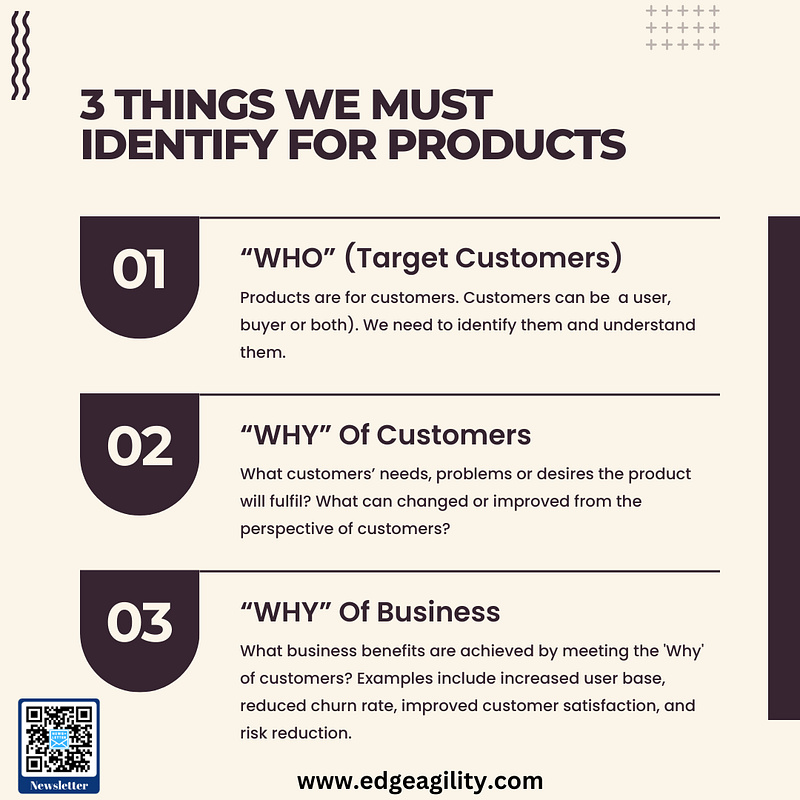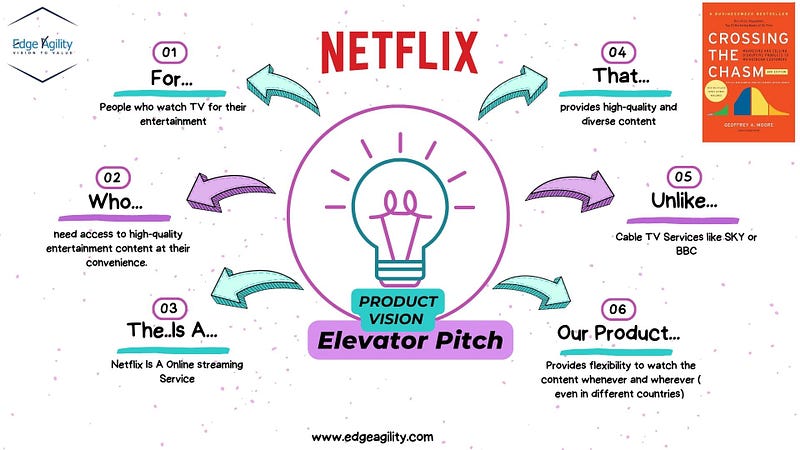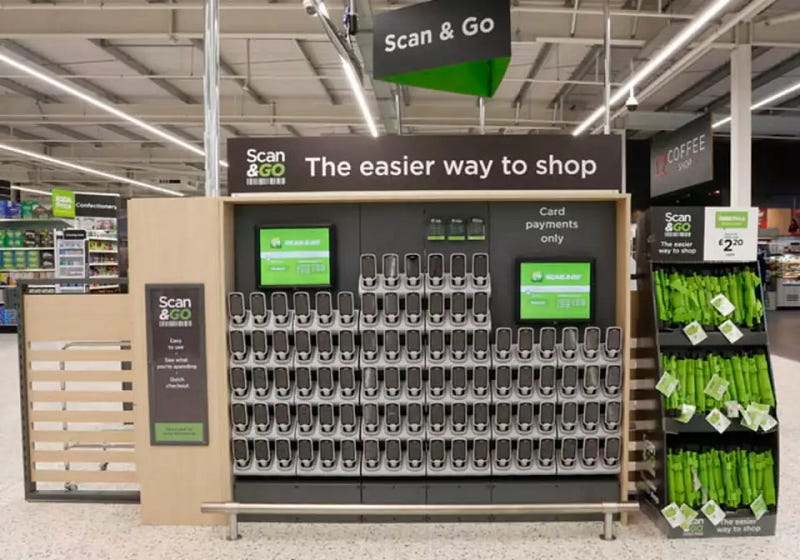In my humble opinion, identifying three key aspects of any product or service is crucial for success. I sometimes call this the ‘1 WHO & 2 WHYs’ approach:

Let’s explore this approach with couple of simple examples.
1) ‘WHO’ are the target customers?
Products are for customers, and understanding them is the first step to success. Target customers can further be categorised into: users, buyers, or both. We need to identify who they are and gain a deep understanding of their needs, behaviours, and preferences.
Example: Netflix

Netflix’s target customers are diverse, including everyone from movie enthusiasts and binge-watchers to families looking for kid-friendly content. By identifying these varied customer segments, Netflix can tailor its offerings to meet the unique preferences of each group.
Example: Asda’s Scan and Go

Asda’s target customers for the Scan and Go feature could be busy shoppers looking to save time, tech-savvy individuals who enjoy using new technology, and families who want a more convenient shopping experience. By recognising these customer segments, Asda can ensure the Scan and Go feature meets their specific needs and enhances their shopping experience.
2) ‘WHY’ should customers buy/use it?
The second aspect to consider is why customers would choose to buy or use the product. This involves understanding what needs, problems or desires the product will fulfil for them. By focusing on what can be changed or improved from the customer’s perspective, we can build products/services that truly add value to their lives.
Understanding this why is very important as it can help in building an ‘Outcome over Output’ mindset. We can start bringing customer-centricity to our products/services.
Example: Netflix
Customers choose Netflix for its extensive library of content, personalized recommendations, and convenience of on-demand viewing. Netflix addresses the desire for entertainment, the need for variety, and the convenience of watching anytime, anywhere. By continuously improving its algorithm to recommend shows and movies that align with individual tastes, Netflix keeps its users engaged and satisfied.
Example: Asda’s Scan and Go
Customers use Asda’s Scan and Go feature for the speed and convenience it offers. It allows them to scan items as they shop, avoiding long checkout lines and making the shopping process quicker and more efficient. This feature addresses the desire for a hassle-free shopping experience and the need to save time, especially for busy customers or those with children.
3) WHY should our Business/Company invest in it?
Finally, it’s essential to address why our business or company should invest in the product. This involves looking at the business benefits that will be achieved by meeting the customers’ needs. Examples include increasing the user base, reducing the churn rate, improving customer satisfaction, reducing risks, and achieving high conversion rates.
We must be able to align Customer Outcomes and Business Outcomes
Example: Netflix
For Netflix, investing in content production and acquisition drives subscriber growth and retention. By analyzing viewer data, Netflix invests in creating original content that resonates with its audience, leading to increased user engagement and loyalty. This strategy not only enhances customer satisfaction but also reduces churn rates and expands the subscriber base, thereby driving revenue growth.
Example: Asda’s Scan and Go
Asda’s investment in the Scan and Go feature enhances customer satisfaction by offering a smoother, faster shopping experience. This technology reduces checkout times and improves the overall shopping experience, leading to higher customer satisfaction and loyalty. Additionally, it can reduce labour costs at checkouts and increase the efficiency of store operations, contributing to the company’s bottom line.
By following the ‘1 WHO & 2 WHYs’ approach, businesses can ensure they are creating products that not only meet customer needs but also align with their business goals.


